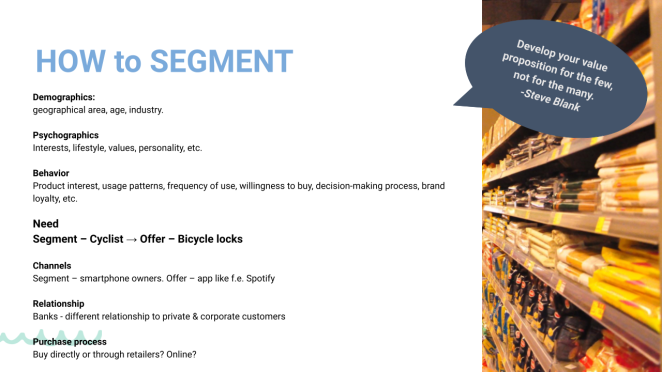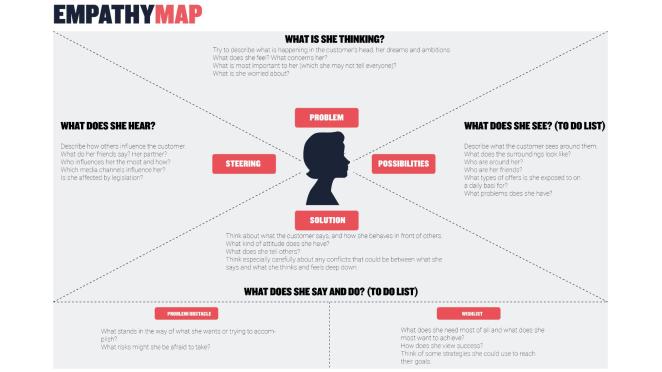After the value we have to define out customer, what needs do they have and how do we create a persona that mirrors the information we received in our need analysis?
When we have discovered the need of our target groups, we might come to a point where the original idea we had does not correlate to the customer need, what happens then?
Who is your customer?

Point, aim and shoot
It is not about excluding and saying no to customers. It is about finding your entry on the market.
We have to find your “Window of opportunity”

HOW to SEGMENT
These are some different ways of segmenting.
Demographics is the most frequently used. But the questions is that really relevant for all?
You want to have a clear nisched segment instead of a to wide and fluffy so here is also a good reminder to use different ways as a complement.
We highlight the NEED here since it's more beneficial to do a segmentation based on a need rather than ex. age and work
For example - we have cyclist as the segment and offer bicycle locks - that is a need that they most likely always will have right.

The empathy map - a need based persona
We focus now on our customer, how much do we actually know about our customer? And what do we need to figure out?
The empathy map is a persona tool that is based on needs instead of the usual demographics.
If we need to pivot our business idea?
So, what happens if we have made a need analysis of our customer segments and realize that our business idea/business model does not correlate with their needs? Do we throw in the towel and give up?

No, we pivot
A pivot is changes based on input, new knowledge, from the target group, stakeholders and the outside world. It's the difference between various versions of your idea/solution.
No pivot = no development of the idea
Why don't we pivot?
- Difficult to interpret (especially written) feedback - diffuse, polite/lukewarm feedback.
- We ask leading questions to get the idea confirmed - loops with the idea as a filter.
- Relying too much on expert knowledge/our own knowledge rather than the collective expertise of the target audience.
- Ignores feedback from the target audience.
- Invested too much resources -"Now we can't back down" Sunk cost fallacy.
- Fear of being wrong, considered to have failed, "make fools of themselves".
